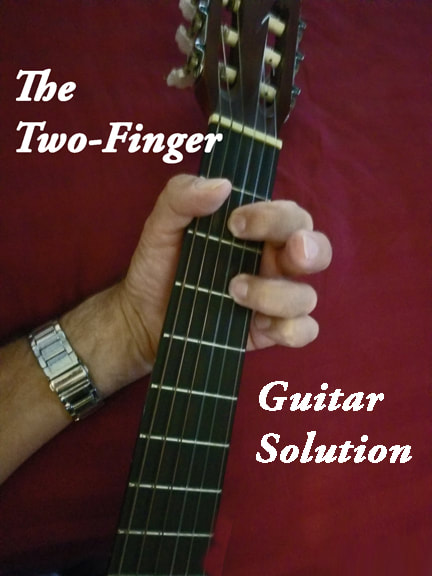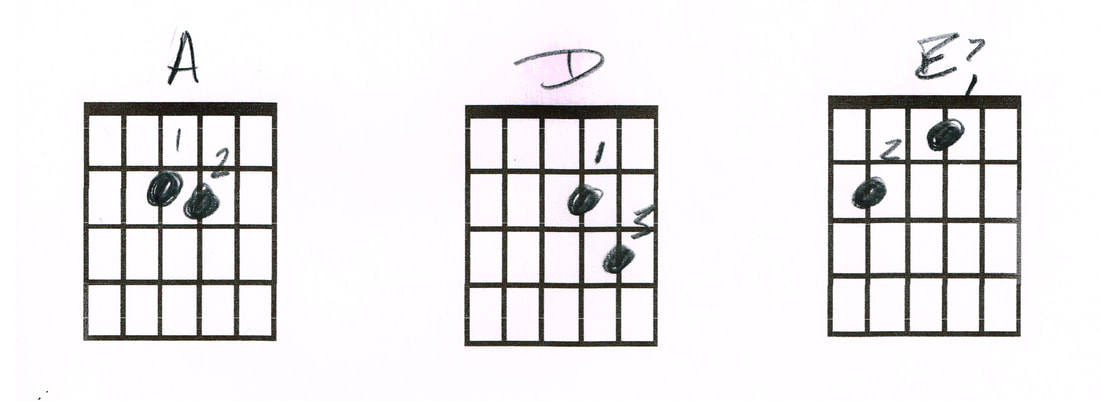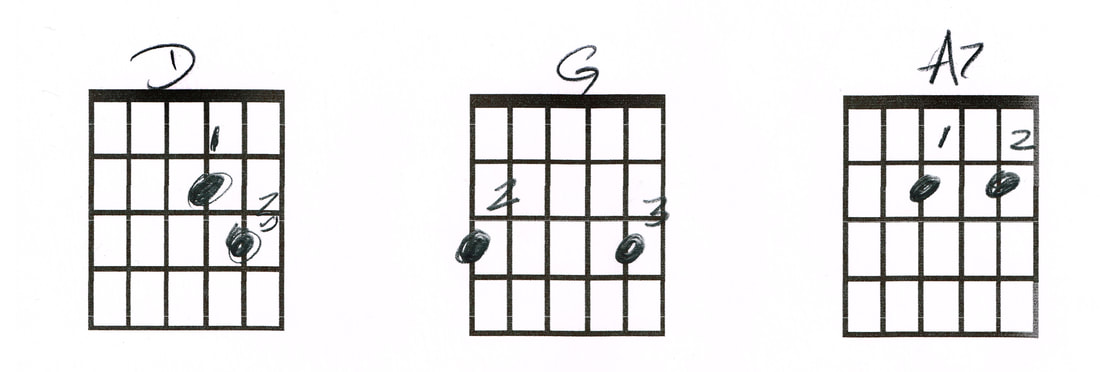Here is an alternative to the basic I-IV-V7 cowboy chord system.
Cowboy chords are the basic diatonic chords that almost always formed within the first three fret blocks.
While it’s important to learn all the chords you can, there is a work-around to quickly and easily play a I-IV-V7 in all the diatonic keys – if you use a capo.
The Keys
The deal is that you learn I-IV-V7 in the keys of A major and D major.
Before I get into the chord shapes, let me lay out the solution:
If you play the A major chord shapes with no capo, you are in the key of A major.
If you play the A major chord shapes with the capo in the second fret block, you are in the key of B major.
If you play the A major chord shapes with the capo in the third fret block, you are in the key of C major.
If you play the D major chord shapes with no capo, you are in the key of D major.
If you play the D major chord shapes with the capo in the second fret block, you are in the key of E major.
If you play the D major chord shapes with the capo in the third fret block, you are in the key of F major.
If you play the D major chord shapes with the capo in the fifth fret block, you are in the key of G major.
The Shapes
There is a way to play these chords with only TWO fingers on your left hand. These voicings have the ancillary benefit of being the beginning guitarist’s favorite friend, namely, more ringing open strings.
The A major shapes
Cowboy chords are the basic diatonic chords that almost always formed within the first three fret blocks.
While it’s important to learn all the chords you can, there is a work-around to quickly and easily play a I-IV-V7 in all the diatonic keys – if you use a capo.
The Keys
The deal is that you learn I-IV-V7 in the keys of A major and D major.
Before I get into the chord shapes, let me lay out the solution:
If you play the A major chord shapes with no capo, you are in the key of A major.
If you play the A major chord shapes with the capo in the second fret block, you are in the key of B major.
If you play the A major chord shapes with the capo in the third fret block, you are in the key of C major.
If you play the D major chord shapes with no capo, you are in the key of D major.
If you play the D major chord shapes with the capo in the second fret block, you are in the key of E major.
If you play the D major chord shapes with the capo in the third fret block, you are in the key of F major.
If you play the D major chord shapes with the capo in the fifth fret block, you are in the key of G major.
The Shapes
There is a way to play these chords with only TWO fingers on your left hand. These voicings have the ancillary benefit of being the beginning guitarist’s favorite friend, namely, more ringing open strings.
The A major shapes
The A chord – There is no major third in this shape. The third is replaced with a ringing 2nd or 9th depending how you tend to hear this sound. Don’t hit the low E string - lightly mute it with your thumb.
The D chord – Again, there is no major third in this shape. The third is replaced with a shimmering 2nd or 9th depending how you tend to hear this sound. Don’t hit the low E string - lightly mute it with your thumb.
The E7 chord – This is the basic two-finger cowboy chord form.
The D major shapes
The D chord – Again, there is no major third in this shape. The third is replaced with a shimmering 2nd or 9th depending how you tend to hear this sound. Don’t hit the low E string - lightly mute it with your thumb.
The E7 chord – This is the basic two-finger cowboy chord form.
The D major shapes
The D chord – It is the same shape used as a IV chord in A major.
The G chord - There is no third in this voicing. The third finger fretting the low G should lightly mute the A string next to it. The same goes for the third finger fretting the B string – it should lightly mute the high E string so it doesn’t ring out.
When moving to this chord from the D, anchor your third finger on the B string.
The A7 chord - This is the basic two-finger cowboy chord form of A7. Don’t hit the low E string - lightly mute it with your thumb.
Take Away:
These chord forms have a distinct Americana sound reminiscent of Aaron Copland and James Taylor. The simple two-finger forms are non-threatening to the novice guitarist. Advanced guitarists use these forms for the colors produced when you replace the third of the chord with the second.
Next time, we'll examine some simple suspensions to create motion. And let's get crazy and add a third firger, too!
Have fun experimenting with these shapes in your classroom.
The G chord - There is no third in this voicing. The third finger fretting the low G should lightly mute the A string next to it. The same goes for the third finger fretting the B string – it should lightly mute the high E string so it doesn’t ring out.
When moving to this chord from the D, anchor your third finger on the B string.
The A7 chord - This is the basic two-finger cowboy chord form of A7. Don’t hit the low E string - lightly mute it with your thumb.
Take Away:
These chord forms have a distinct Americana sound reminiscent of Aaron Copland and James Taylor. The simple two-finger forms are non-threatening to the novice guitarist. Advanced guitarists use these forms for the colors produced when you replace the third of the chord with the second.
Next time, we'll examine some simple suspensions to create motion. And let's get crazy and add a third firger, too!
Have fun experimenting with these shapes in your classroom.



 RSS Feed
RSS Feed